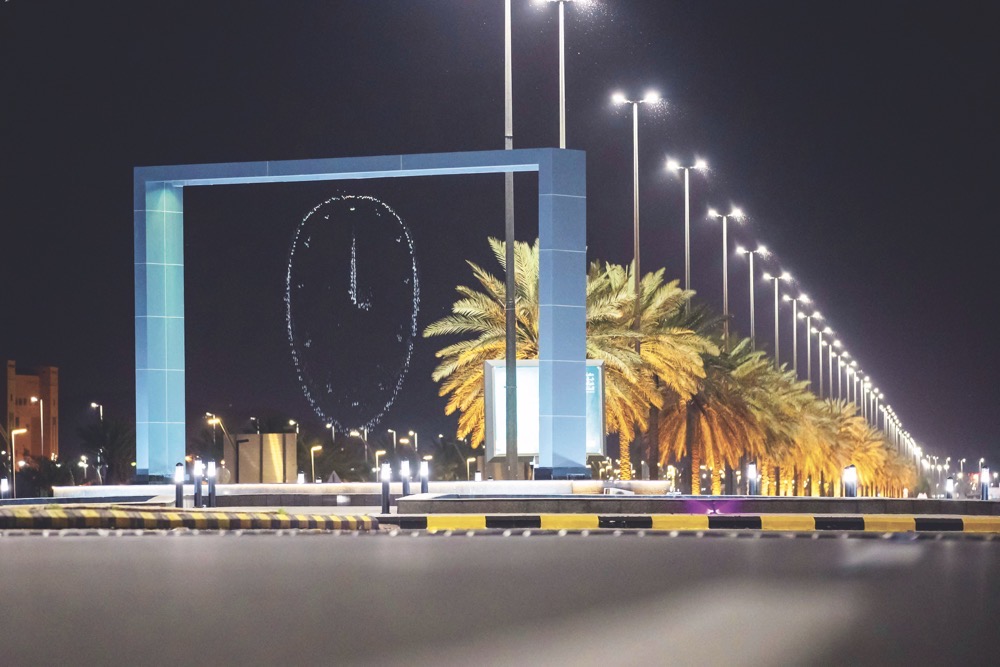RIYADH: In the transformative landscape of 2023, Saudi Arabia’s travel sector has not only met but exceeded expectations, prompting a substantial recalibration of its Vision 2030 ambitions.
This year saw the Kingdom scaling up its initial target of securing 100 million visits by the end of the decade, with the Kingdom’s Tourism Minister Ahmed Al-Khateeb saying in October that this ambition has been revised to 150 million.
This came after Saudi airports recorded over 93.5 million tourists in 2022, with around 77 million domestic visitors, and 16.5 million arriving from international destinations.
The expansion of the tourism industry has been bolstered by regulatory adjustments, including the new “Visiting Investor” visa approved by Saudi Arabia’s Ministry of Investment and the Foreign Affairs department.
Now, international investors no longer have to visit a Saudi embassy to get a permit to travel to the Kingdom after the process for applying was moved online in the second phase of the e-visa service scheme, expanding its coverage from nearly 60 nations to include all countries worldwide.
With a goal to make tourism its second-largest revenue source by 2030 as part of Saudi Arabia’s economic diversification initiative, the Kingdom is taking bold steps to showcase its history, landscapes, and cultural diversity.
In the tourism and leisure sectors, Vision 2030 is creating attractions that are of the highest international standards, improving visa issuance procedures for visitors, and preparing and developing Saudi Arabia’s historical and heritage sites.

One of the most prominent projects contributing to the development of the industry is the launch of Riyadh Air, the Kingdom’s new flag-carrier.
The airline seeks to turn the Saudi capital into a gateway to the world and a global destination for transportation, trade, and tourism.
This mission is gathering pace as the Kingdom was ranked second globally in terms of tourist arrivals during the first seven months of 2023, the Saudi Press Agency reported in October.
Additionally, the Kingdom’s Air Connectivity Program is expanding, with new direct flights between Jeddah, Riyadh, and worldwide destinations such as Casablanca, Brussels, and Beijing announced.
In October, the General Authority for Civil Aviation unveiled a new strategy that seeks to attract $100 billion worth of investments by 2030 in a bid to bolster competitiveness and enhance transparency in the sector.
Saudi Arabia abroad
HIGHLIGHT
93.5m — Saudi airports recorded over 93.5 million tourists in 2022, with around 77 million domestic visitors, and 16.5 million arriving from international destinations.
$37.8bn — Saudi Arabia aims to increase its hotel room inventory by 315,000, projecting a development expenditure of around $37.8 billion by 2030, bringing the overall hotel room inventory to nearly 450,000.
As Saudi Arabia stands at the crossroads of historical tradition and modern vision, the Kingdom has embarked on a transformative journey to strengthen its global position on the tourism map.
In November, Minister of Tourism Ahmed Al-Khateeb launched the Saudi Pavilion at World Travel Market London, one of the most important exhibitions in the world for the industry.
The Kingdom’s participation reflects its leading and pioneering role in the global tourism scene as one of the fastest-growing tourist destinations worldwide.
During the Saudi Pavilion launching, Al-Khateeb said: “We have updated our goals, now aiming for 150 million visits by 2030, with 70 million being inbound visits.”
The Kingdom is not just relying on its deep and rich history to attract tourists, but is also investing in building new world-class and cutting-edge destinations.
Red Sea Global is one of the world’s most visionary developers, wholly owned by Saudi Arabia’s Public Investment Fund. RSG’s portfolio includes two world-leading destinations announced by Crown Prince Mohammad bin Salman: The Red Sea and AMAALA.
Collectively, these developments will aim to enhance Saudi Arabia’s luxury tourism and sustainability offering, going above and beyond to not only protect the natural environment but to enhance it for future generations to come.

“The sustained demand for domestic, inbound and outbound travel are bolstering tourism and reshaping the travel landscape of the region,” said Muzzammil Ahussain, CEO of Almosafer.
A cornerstone of Vision 2030, RSG will create significant economic opportunities for the people of Saudi Arabia and actively enhance the Kingdom’s rich environmental and cultural heritage.
Meanwhile, Saudi Arabia aims to increase its hotel room inventory by 315,000, projecting a development expenditure of around $37.8 billion by 2030, bringing the overall hotel room inventory to nearly 450,000.
NEOM’s mountains destination Trojena revealed in September that it will be the location for two Marriott hotels— a JW and a W.
These establishments are among the numerous international hotels set to open at the artificial ski retreat, which is slated to host the Asian Winter Games in 2029, with the resort set to welcome visitors and new residents in late 2026.
Another event sure to boost the tourism industry is the World Expo 2030, being held in Riyadh.
The event is set to represent the culmination of Vision 2030 and showcase achievements, with a particular focus on hospitality, tourism, and culture.
Besides the World Expo 2030, Saudi Arabia is scheduled to host various global events, including the Federation for Equestrian Sports World Cup Finals 2024, the 2025 Asian Indoor & Martial Arts Games, the Asian Football Confederation’s Asian Cup in 2027, along with the Asian Summer Games in 2034, and the 2034 FIFA World Cup.
A powerhub for international investors
Explorers are swiftly realizing that Saudi Arabia offers more than just rolling sand dunes.
Aligned with Vision 2030, the country aspires to elevate the tourism industry’s contribution to over 10 percent of the GDP by 2030. A substantial investment of $1 trillion is earmarked for the sector in the next decade, presenting lucrative opportunities for global investors.
Over the last three years, more than 3,500 tourism investment licenses have been granted in Saudi Arabia.
With ongoing efforts by the Saudi government to enhance the business environment and facilitate travel to the Kingdom, the tourism sector is also poised for substantial growth.
Muzzammil Ahussain, CEO of travel company Almosafer, told Arab News the giga-projects and initiatives undertaken to transform the tourism sector in Saudi Arabia are already showing results.
He added: “The sustained demand for domestic, inbound and outbound travel are bolstering tourism and reshaping the travel landscape of the region.”













